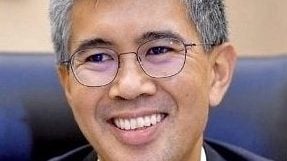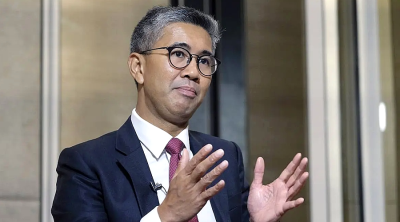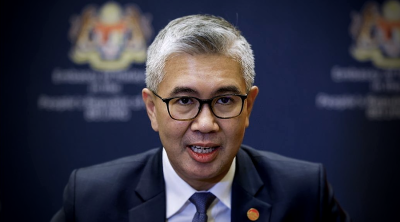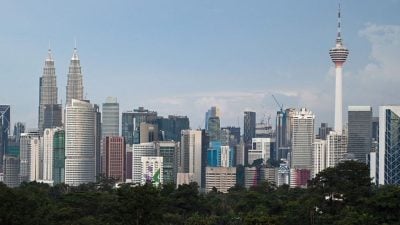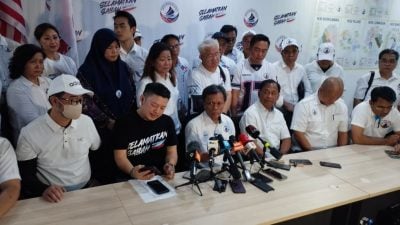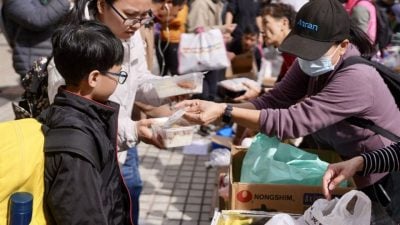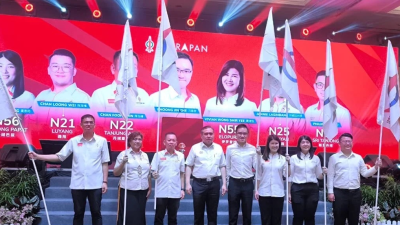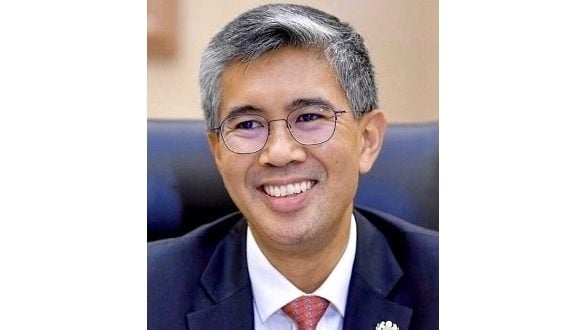
When I grew up, one of the most fascinating films on time travel was Back to the Future.
I thought about this film as Malaysia finished hosting the Economic Ministers from ASEAN and its Dialogue Partners, for the 57th ASEAN Economic Ministers’ Meeting and Related Meetings.
Imagine this: the year is 2045. Many youths are gainfully employed in high-tech industries or high-value services within ASEAN—a globally respected economic powerhouse that became the world’s fourth largest economy by 2030.
The region is agile, inclusive, and digitally integrated.
Every employable youth is benefiting from ASEAN’s well-established, seamless and secure digital economy.
Almost everyone—from elderlies to toddlers—is living and breathing “digital.”
Most public education and healthcare services are delivered on-demand, online or via apps.
AI helps people live longer, healthier, more productive lives.
Food security is a given, supported by AI-powered agrotech.
As most of us embrace a healthy lifestyle, public healthcare funding has increasingly been channeled to improving education, as well as promoting entrepreneurship and creativity.
Thanks to the critical mass of e-mobility, the region’s air could never be cleaner as all ASEAN member states achieved their Net Zero goal well ahead of their target timeline.
Businesses of all sizes flourish, particularly the MSMEs—thanks to advances in ASEAN’s digital economy ecosystem.
The region successfully unlocked US$2 trillion of digital economic value by 2030, empowering roughly 70 million MSMEs through the creation of a modern, comprehensive, and interoperable regional digital economy framework.
As a result, trade among ASEAN countries has increased to a respectable 80 percent, a reflection of improved prosperity among its member states.
E-commerce, fintech, and AI-driven services flow across ASEAN with minimal friction, supported by interoperable payment systems and robust data governance.
Youth-led startups and creative industries prosper, powered by regional innovation hubs and digital talent mobility.
Green manufacturing, circular economy and renewable energy see industries—including the aviation industry—releasing only hydrogen and water into the air.
Energy security is delivered by hydro, wind, solar and small, modular reactors—accessible via a smart, regional AI-empowered ASEAN Power Grid.
Back in 2025, it was recorded in history that this evolution was shaped by Malaysia’s 18 Priority Economic Deliverables (PEDs), which laid the groundwork for a future-ready ASEAN Economic Community (AEC).
Indeed, when Malaysia assumed the Chairmanship of ASEAN’s Economic Pillar this year, I felt the weight of responsibility on our shoulders.
Chairing the 57th ASEAN Economic Ministers’ (AEM) Meeting in Kuala Lumpur this past week brought that responsibility into sharp focus.
In a world fractured by geopolitical rivalry, fragile supply chains and global economic headwinds, Malaysia has been entrusted to guide ASEAN towards stability, resilience and growth.
This is both an honor and a heavy responsibility.
Why ASEAN matters to Malaysians, and Malaysian youths
For many, ASEAN meetings may feel unrelatable.
Having been fully involved in the ASEAN Ministerial decision-making process since December 2022, I can confidently share that the decisions made at AEM do directly shape our economy, our jobs, and our opportunities.
ASEAN’s principle of Centrality means that, expectedly, certain things may lumber along, instead of moving quickly, but the results still speak for themselves.
Last year, ASEAN’s trade in goods rose by 8.9 percent to US$3.8 trillion. Services trade surged 12.2 percent to US$1.3 trillion.
FDI inflows climbed 8.0 percent to US$226 billion (versus global FDI which fell 11 percent).
For Malaysians, ASEAN’s success is not an abstract concept— it spells tangible outcomes, like jobs, investments, and opportunities.
This year, our PEDs like the upgrade of the ASEAN Trade in Goods Agreement (ATIGA) will reduce red tape, making it more cost-efficient for exporters—from Penang’s electronics firms to Sabah’s palm oil producers—to sell competitively across the region.
That translates into more contracts, and more jobs at home.
The ASEAN Framework for Integrated Semiconductor Supply Chains (AFISS) ensures Malaysia remains central to an industry that already supports hundreds of thousands of jobs in Kulim, Bayan Lepas and Johor.
In terms of growing our niche in green technology, the EV Battery Passport Roadmap will help embed us in the clean energy industries of the future.
Indeed, sustainability—part of our Chairmanship’s theme this year—has been further entrenched in ASEAN’s economic agenda.
From financing the ASEAN Power Grid and advancing carbon-neutral strategies, to supporting MSMEs on Just Transition, we are paving the way for a low-carbon, yet highly industrialized and commercially productive ASEAN.
For Malaysia, this is about more than climate goals—it is about future-proofing our resilience and competitiveness.
Malaysia as a trusted bridge
What also struck me at the 57th AEM was the depth and breadth of our multilateral engagement.
From China, the US and India to the EU, South Korea, Japan, Australia and New Zealand, they all came to ASEAN’s table—a clear proof of ASEAN’s value as an economic partner.
This October, Kuala Lumpur will again host the ASEAN Leaders, with Dialogue Partner country leaders such as Donald Trump, Li Qiang and Narendra Modi expected.
Malaysia will be on the global stage again—not as a bystander, but as a bridge-builder trusted by all sides.
Shaping global trade architecture
We are also taking bold steps to shape the future of trade.
In October, Malaysia will host the first RCEP Summit since 2020, uniting a bloc that represents 30 percent of global GDP, and 30 percent of global population.
In November, we will convene ASEAN’s first formal dialogue with the CPTPP.
Malaysia sits at the intersection of both RCEP and CPTPP. That unique position allows us to benefit from both sides’ rules on supply chains, digital trade and sustainability—areas that will define the future of commerce.
Malaysia has also consistently called for the World Trade Organization (WTO) reform—to restore its appellate body and modernize its rules for the digital era.
These reforms matter directly to Malaysia’s exporters, whether they produce halal products, semiconductors, or professional services.
Securing Malaysia’s future
In short, our leadership of ASEAN is not about prestige. It is about anchoring ASEAN’s prosperity in turbulent times.
It is also about ensuring that Malaysian workers, entrepreneurs and businesses are connected to the opportunities of tomorrow.
As Chair, Malaysia—under Datuk Seri Anwar Ibrahim’s premiership—is proving that leadership is not measured by size, but by vision and credibility. 2025 is a defining year: we are showing that Malaysia can be a respected middle-power catalyst and a bridge-builder.
And as I reflect on this past week, one thing is clear: the work we do in ASEAN is about securing a stronger, more resilient and more prosperous world—for Malaysia, and for every Malaysian.
Through ASEAN, we are working to make that world a reality.
(Tengku Zafrul Tengku Abdul Aziz is the Minister of Investment, Trade and Industry, Malaysia.)
ADVERTISEMENT
ADVERTISEMENT






